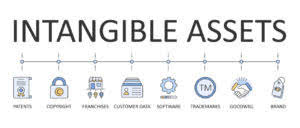Content

In this document, you’ll record your nonprofit’s revenue and expenses from the year, to demonstrate how finances have been utilized. Essentially, the Form 990 is the IRS’s method of evaluation to make sure your nonprofit is financially honest and legitimate. Another aspect of nonprofit accounting that helps organizations stay accountable to their finances is the nondistribution constraint.

For-profit businesses have well-established accounting practices that you might already know. There are plenty of commonalities between these processes and the guidelines nonprofits must follow in accounting. State taxes and regulations differ from state to state, which makes https://accounting-services.net/what-is-the-difference-between-bookkeeping-and/ it difficult to be precise when discussing on a large scale. More than likely, you’ll need to register for charitable solicitation in the states where you operate. One of the greatest differences between nonprofit and for-profit accounting is the organization’s overall focus.
Explore this Program
Even if a nonprofit is exempt from federal income taxes, it is likely that its employees will be subject to employment taxes. Nonprofits may or may not be exempt from sales taxes, real estate taxes, and other taxes depending on which state in the U.S. they are incorporated or operate. Accountants often refer to businesses as for-profit entities and to nonprofit organizations as not-for-profit entities, or NFPs. Our intent is to merely introduce some of the basic concepts that are unique to nonprofit accounting and reporting that are required by the Financial Accounting Standards Board (FASB).
Just like the statement of financial position, the statement of activities keeps net assets that have conditions and stipulations attached to them separate from unrestricted funds. Nonprofits and for-profits alike need to understand their cash flow and provide a statement about how it moves in and out of the organization. Generally, these reports are pulled once per month, reflecting the previous thirteen months. Using this report, nonprofits can determine the trends that are impacting the revenue and expenses incurred at their organization. Typical categories include program services, management and general, fundraising, and other sources of income. You can use the statement to assess the usage of funds, track performance, and make decisions about future operations.
Why Do Nonprofits Use Funds?
For large nonprofit organizations that have significant accounting needs as well as employees and a large donor-base, Financial Edge can be an excellent fit and it’s our top choice for large organizations. ACCOUNTS through Software4Nonprofits is a program offered by Cooperstock Software, a small company based in Canada. The company was founded by the treasurer of a religious finance committee because he had difficulties finding software that met his needs.
What financial statements are prepared for a non-profit organization?
Nonprofits use four main financial reporting statements: balance sheet, income statement, statement of cash flows and statement of functional expenses. Three of these are similar to common for-profit company statements, with the functional expenses statement being unique.
You also need to understand how to use this information to implement best practices for effective accounting decisions. Providing detailed information on your statement of functional expenses also helps when it’s time to complete your annual Form 990 which requires expenses to be separated in a similar fashion. In the rest of this article, we’ll cover the basics and best practices that all nonprofit professionals should know about accounting. Understanding the basics will help you better manage and plan your programs in a way that brings the most value from your finances. Online Bookkeeping Services for Small Businesses uses funds to organize and create accountability for their dollars. For example, there are different tax requirements, accounting guidelines, and terms.
Araize FastFund Accounting
As part of these periodic reviews, a comparison with actual cash flow and expenses can help nonprofits determine whether their budget needs updating. Let’s cover the differences in documentation, including the for-profit’s balance sheet vs. a nonprofit’s statement of financial position and the for-profit’s income statement vs. a nonprofit’s statement of activities. Like a balance sheet used for for-profit businesses, the statement of financial position reflects the organization’s overall financial position, including its assets and debts. The assets are further divided into restrictions (temporarily restricted, permanently restricted or unrestricted net assets) that identify the limitations on how assets are spent. Nonprofits and for-profit businesses work under different sets of financial accounting rules.
- Overspending a grant budget may have significant financial implications for a nonprofit.
- All public companies in the U.S. must follow GAAP and private companies generally do as well.
- If you upgrade to the local network version—which costs $220 for the first year—up to five users can access the database at once.
- As part of these periodic reviews, a comparison with actual cash flow and expenses can help nonprofits determine whether their budget needs updating.
- Fund accounting is a system of accounting that allows organizations to separate their money into different categories, or “funds,” to stay organized.
- In recent years, advancements in artificial intelligence (AI) have given rise to powerful language models like ChatGPT, capable of understanding and generating humanlike text.
The goal of GAAP for nonprofits is to provide useful information to stakeholders who currently offer resources or may do so in the future. A GAAP report demonstrates adequate financial management, proper funds allocation, and economic viability. It includes information on assets and liabilities, as well as disclosure information, which helps explain financial statements. Many nonprofit organizations end up cobbling together accounting, donor management, and payroll services by using multiple programs, making things confusing during end-of-year reporting.